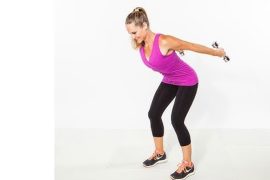Swimming emerges as an exceptional hobby and workout choice suitable for individuals of all ages and fitness levels, offering a plethora of benefits. Praised for its low-impact nature, swimming not only builds strength and fitness but also provides a source of enjoyment. The Centers for Disease Control and Prevention (CDC) highlight its popularity, ranking it as the fourth most favored sport in the United States.
Swimming:
Swimming engages a coordinated effort of arm and leg motions to propel the body through water, requiring significant exertion to overcome water’s inherent resistance. This effort results in muscle strengthening, but swimming primarily serves as a form of cardiovascular exercise, as noted by Kristopher Gagne, a swimming coach based in Houston. Merely splashing around in water doesn’t necessarily constitute a workout, but structured swimming sessions, regardless of whether one engages in competitive swimming, provide numerous health benefits. The distinction lies in the structured nature and specific goals behind a swimming workout, emphasizing its effectiveness as a comprehensive form of exercise for individuals seeking improved cardiovascular health and overall fitness.
Swimming for exercise provides a comprehensive total-body workout, engaging a wide range of muscles and improving muscle strength. Key muscle groups involved include the large muscles in the back (such as the latissimus dorsi and trapezius), chest (pectoralis major), shoulders (deltoids), hips (glutes), legs (quadriceps and hamstrings), and midsection (abdominals). Additionally, the arms play a crucial role in propelling the body through the water. The four main swimming strokes – backstroke, butterfly, breaststroke, and freestyle (also known as the front crawl) – each utilize different muscle groups to varying degrees. While the backstroke primarily engages back muscles, all stroke styles involve similar muscle groups to varying extents, contributing to a comprehensive and effective total-body workout during swimming sessions.
Health Benefits of Swimming:
Swimming is a fantastic full-body workout that offers a plethora of benefits, both physical and mental. Here are some key advantages of swimming:
- Cardiovascular Health: Swimming is an excellent cardiovascular exercise that strengthens the heart and improves circulation, reducing the risk of heart disease and stroke.
- Muscle Strength and Endurance: It engages various muscle groups, including the core, arms, legs, and back, helping to build strength and endurance.
- Low Impact: Swimming is gentle on the joints, making it suitable for people of all ages and fitness levels, including those with arthritis or joint pain.
- Weight Management: It burns a significant number of calories, making it an effective way to manage weight and improve body composition.
- Improved Flexibility: The range of motion required in swimming helps enhance flexibility and joint mobility.
- Stress Relief: Swimming can be a meditative activity, promoting relaxation and reducing stress levels.
Started with swimming or improve your skills:
Now, if you’re looking to get started with swimming or improve your skills, here are some tips:
- Take Swimming Lessons: If you’re a beginner or want to refine your technique, consider taking swimming lessons from a qualified instructor. They can provide personalized guidance and feedback.
- Start Slow: If you’re new to swimming, begin with short sessions and gradually increase the duration and intensity as your stamina improves.
- Focus on Technique: Proper technique is crucial for efficient and effective swimming. Pay attention to your body position, breathing, arm stroke, and kicking technique.
- Warm Up: Before diving into intense swimming workouts, warm up your muscles with some light swimming or dynamic stretches to prevent injury.
- Set Realistic Goals: Whether it’s swimming a certain distance, improving your speed, or mastering a specific stroke, set achievable goals to stay motivated and track your progress.
- Mix It Up: Don’t stick to just one stroke. Experiment with different strokes like freestyle, backstroke, breaststroke, and butterfly to work different muscle groups and prevent boredom.
- Use Swim Gear: Consider using swim gear like goggles, swim caps, and fins to enhance your comfort and performance in the water.
- Stay Consistent: Like any other form of exercise, consistency is key to seeing improvements in your swimming abilities. Aim to swim regularly, whether it’s a few times a week or daily.
- Stay Hydrated: Even though you’re surrounded by water, swimming can still lead to dehydration. Make sure to drink plenty of water before and after your swim sessions.
- Listen to Your Body: Pay attention to how your body feels during and after swimming. If you experience pain or discomfort, take a break and consult a healthcare professional if needed.
Remember, swimming is not only a valuable skill but also an enjoyable activity that you can continue to reap the benefits of for years to come.
Disclaimer:
The information contained in this article is for educational and informational purposes only and is not intended as a health advice. We would ask you to consult a qualified professional or medical expert to gain additional knowledge before you choose to consume any product or perform any exercise.







